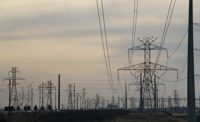Although the leadership of the Chinese Communist Party will undergo a transition, national policies will continue to prioritize climate-change and environmental issues, with an unwavering focus on clean, efficient approaches to producing and consuming energy. Professionals operating in China should continue to focus on improving efficiencies in the industrial, buildings and construction sectors, said officials at last fall’s 18th National People’s Congress.
The current trajectory is laid out in the 12th Five-Year Plan (FYP), regarded as a blueprint for China's overall goals and objectives. "[These goals] undergo constant review and revision over the course of the five-year cycle," according to APCO, a public affairs and strategic communications firm. The FYP was last ratified in March 2011.
The previous version of the FYP strongly emphasized efficiency in the industrial energy sector, which comprises 70% of China’s total energy use. However, at that time, “by global comparisons, China was still inefficient, so there was a lot of low-hanging fruit to take advantage of,” said Deborah Seligsohn, principal adviser for the China Climate and Energy Program (CCEP) at the World Resources Institute.
One of CCEP's most lauded initiatives, the Top 1,000 Energy-Consuming Enterprises Program, improved energy performance by giving companies clear benchmarks and by closing many small factories. The goal was to attain 20% energy intensity; China reached 19.1%. “China has already taken many of the easier steps to boost its industrial energy efficiency,” according to the China Sustainable Energy Program (CSEP) in its October 2011 report, “China Kick-Starts Its Clean Energy.” Further gains, however, will be more difficult to realize.
The 12th Five-Year Plan
The new energy-intensity reduction target is 16%, a reduced percentage that takes into account the difficulties of attaining additional efficiencies.
The government has decided to expand to 10,000 the Top 1,000 Energy-Consuming Enterprises Program. It is expected to affect 15,000 to 16,000 firms that account for almost 85% of the energy used by China’s industrial sector, or about 60% of China’s overall energy consumption.
The Top 1,000 program primarily targeted construction-materials manufacturing, but now the government has started working with a number of other sectors, observes Taryn Sullivan, founder and CEO of Efficiency Exchange, which is helping Chinese factories become more energy-efficient. “The more heavy-industry guys, they have already been through it,” she says.
Seligsohn notes, “Once you’ve done the big industries, the saving per unit per investment goes down.” As well as adding new industries—for example, textiles—there is a need to restructure and reform companies, rather than just closing them. From the Top 1,000, explains Seligsohn, “you have one-third of China’s primary energy output. With 10,000 companies, you only get an additional 20%.”
Premier Wen Jiabao has stated that China will put in place “well-equipped statistical and monitoring systems for greenhouse-gas emissions, energy conservation and emissions reductions.” One such example is the so-called ISO 500001 policy, which establishes a framework to manage energy for industrial plants, commercial facilities and entire organizations.



Post a comment to this article
Report Abusive Comment